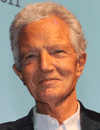Thursday, 12 September 2013
08:00 | Registration | |||
Advances in DNA Arrays | ||||
09:00 |
| |||
10:00 | Coffee Break and Networking in the Exhibition Hall | |||
10:45 | Study of Gene Expression Signatures of Pulmonary Disease | |||
11:30 | CANCELLED - DUE TO VISA ISSUES | |||
12:15 | Lunch and Networking in Exhibition Hall | |||
13:30 | Poster Viewing Session | |||
Emerging Technologies | ||||
14:15 | Skinomics: Skin as the Target for DNA Microarrays | |||
15:00 | Copy Number and SNP Microarrays: Applications in a Clinical Setting | |||
15:45 | Coffee Break and Networking in the Exhibition Hall | |||
16:30 | Using the Random Generalized Linear Model to Predict Clinical Outcomes Based on Genomic Data | |||
17:15 | Validating Multi-gene Prognostic Assays in Breast Cancer on the NanoString N-Counter Platform | |||
18:00 | Reception and Roundtable Discussions in Exhibition Hall | |||
19:30 | End of Day One | |||
Friday, 13 September 2013
Advances in Protein and Antibody Arrays | ||||
09:00 |
| |||
10:00 | Coffee Break and Networking in the Exhibition Hall | |||
10:45 | A Protein Array Platform with A New Approach to Labeling and Detection | |||
Drug Discovery and Development | ||||
11:30 | The Impact of Glycan Arrays on Biology and Medicine | |||
12:15 | Lunch and Networking in Exhibition Hall | |||
13:30 | Poster Viewing Session | |||
14:15 | Using Reverse Phase Protein Arrays to Understand the Basis for Sensitivity and Resistance to BRAF Inhibitors in Metastatic Melanoma | |||
15:00 | Using Microarray and Proteomics to Understand the Role of Nutrient Metabolism in Inducing Transporters During Ontogenetic Development of the Gut For most animal cells, the signals that regulate differentiation and expression levels typically arise from endogenous autocrine, paracrine, neurocrine or endocrine sources. Unlike most cells, however, intestinal epithelial cells are directly exposed to luminal contents known to act as environmental cues regulating development of numerous transport and enzyme systems required for nutrient absorption. An important, unexplored question that is key to increasing our understanding of gut ontogenetic development is whether metabolism of these luminal contents is required for the regulation of gut enzymes and transporters. | |||
15:45 | Coffee Break and Networking in the Exhibition Hall | |||
16:15 | Drug-Eluting Microarrays for Screening Combinatorial Drug Interactions in Primary Cancer Stem Cells | |||
17:00 | Close of Conference | |||

